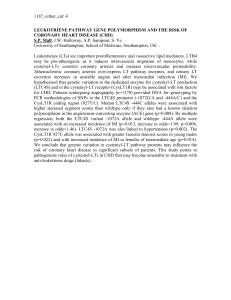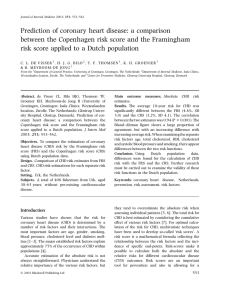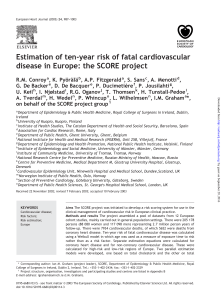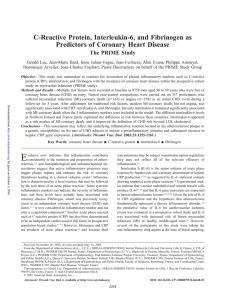Group I Questions.doc
advertisement
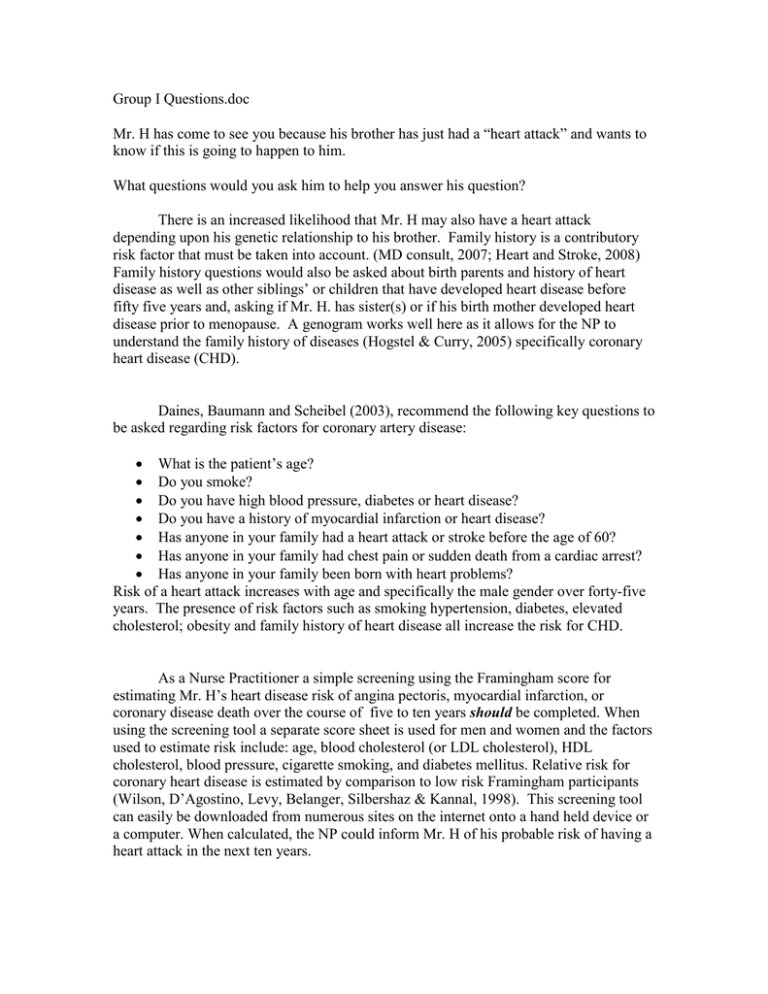
Group I Questions.doc Mr. H has come to see you because his brother has just had a “heart attack” and wants to know if this is going to happen to him. What questions would you ask him to help you answer his question? There is an increased likelihood that Mr. H may also have a heart attack depending upon his genetic relationship to his brother. Family history is a contributory risk factor that must be taken into account. (MD consult, 2007; Heart and Stroke, 2008) Family history questions would also be asked about birth parents and history of heart disease as well as other siblings’ or children that have developed heart disease before fifty five years and, asking if Mr. H. has sister(s) or if his birth mother developed heart disease prior to menopause. A genogram works well here as it allows for the NP to understand the family history of diseases (Hogstel & Curry, 2005) specifically coronary heart disease (CHD). Daines, Baumann and Scheibel (2003), recommend the following key questions to be asked regarding risk factors for coronary artery disease: What is the patient’s age? Do you smoke? Do you have high blood pressure, diabetes or heart disease? Do you have a history of myocardial infarction or heart disease? Has anyone in your family had a heart attack or stroke before the age of 60? Has anyone in your family had chest pain or sudden death from a cardiac arrest? Has anyone in your family been born with heart problems? Risk of a heart attack increases with age and specifically the male gender over forty-five years. The presence of risk factors such as smoking hypertension, diabetes, elevated cholesterol; obesity and family history of heart disease all increase the risk for CHD. As a Nurse Practitioner a simple screening using the Framingham score for estimating Mr. H’s heart disease risk of angina pectoris, myocardial infarction, or coronary disease death over the course of five to ten years should be completed. When using the screening tool a separate score sheet is used for men and women and the factors used to estimate risk include: age, blood cholesterol (or LDL cholesterol), HDL cholesterol, blood pressure, cigarette smoking, and diabetes mellitus. Relative risk for coronary heart disease is estimated by comparison to low risk Framingham participants (Wilson, D’Agostino, Levy, Belanger, Silbershaz & Kannal, 1998). This screening tool can easily be downloaded from numerous sites on the internet onto a hand held device or a computer. When calculated, the NP could inform Mr. H of his probable risk of having a heart attack in the next ten years. Limitations of the risk calculator can be found at: http://www.ti.ubc.ca/en/node/152 References: Daines, J., Baumnann, L., & Scheibel, P. (2003). Acute Low Back Pain. In Advanced Health Assessment and Clinical Diagnosis in Primary Care (2nd ed.) pp 377-390. Mosby: St. Louis, Missouri. Heart and Stroke (2008). Risk factor. Retreived on June 24, 2008 from http://www.heartandstroke.com/site/c.ikIQLcMWJtE/b.3484043/k.46D3/Risk_factors_yo u_cant_control.htm Hogstel, M.& Curry, L. (2005). Health Assessment Through the Lifespan (4th ed.) F. A. Davis Company: Philadelphia. Wilson, P., D'Agostino, R., Levy, D., Belanger, A., Silbershatz, H,, Kannel, W., (1998). Prediction of coronary heart disease using risk factor categories. Circulation, 97, 18371847. University of British Columbia (2007). Using Framingham for primary prevention cardiovascular risk assessment. Retreived on June 25, 2008 from http://www.ti.ubc.ca/en/node/152

